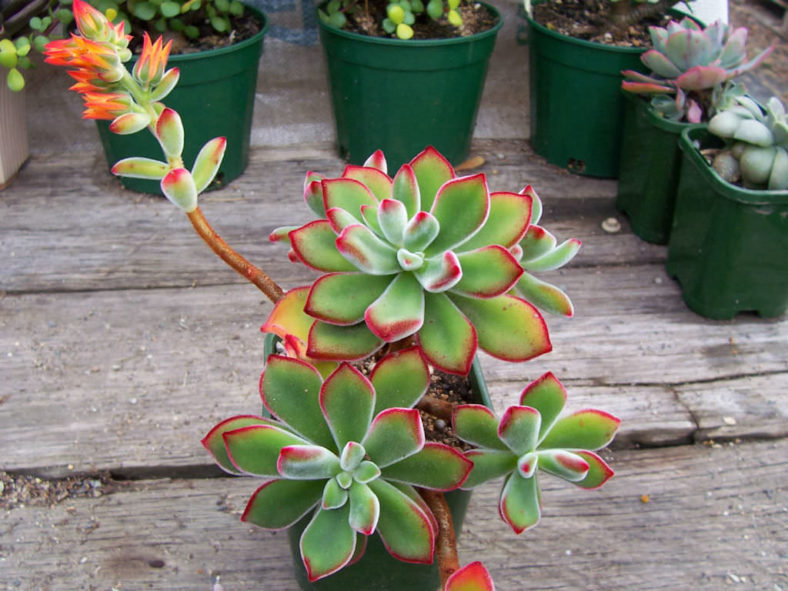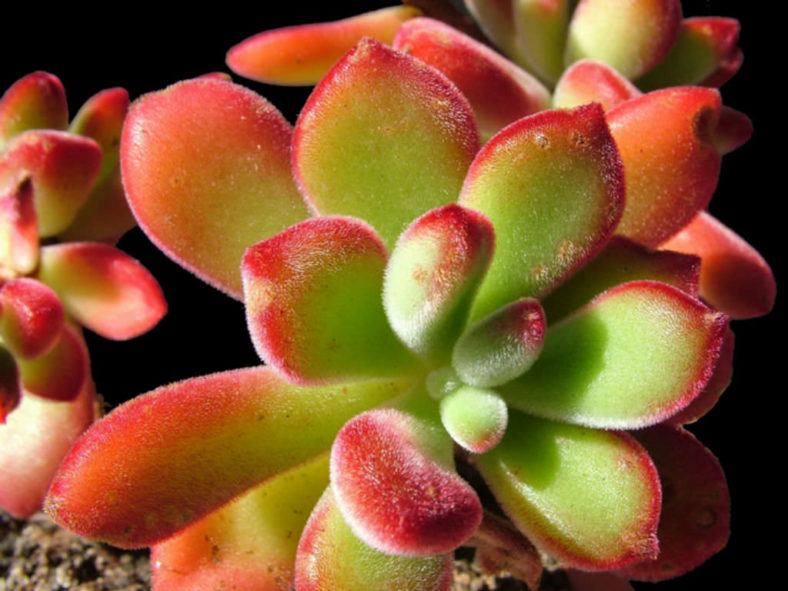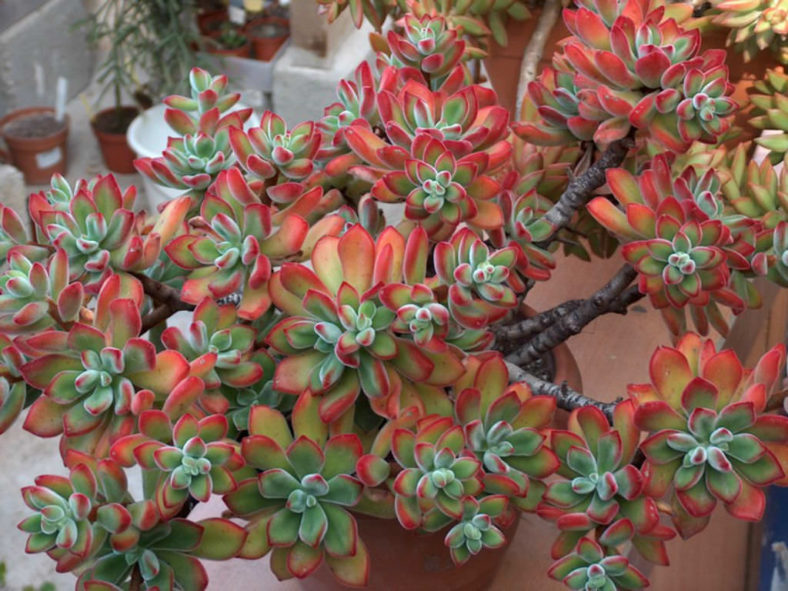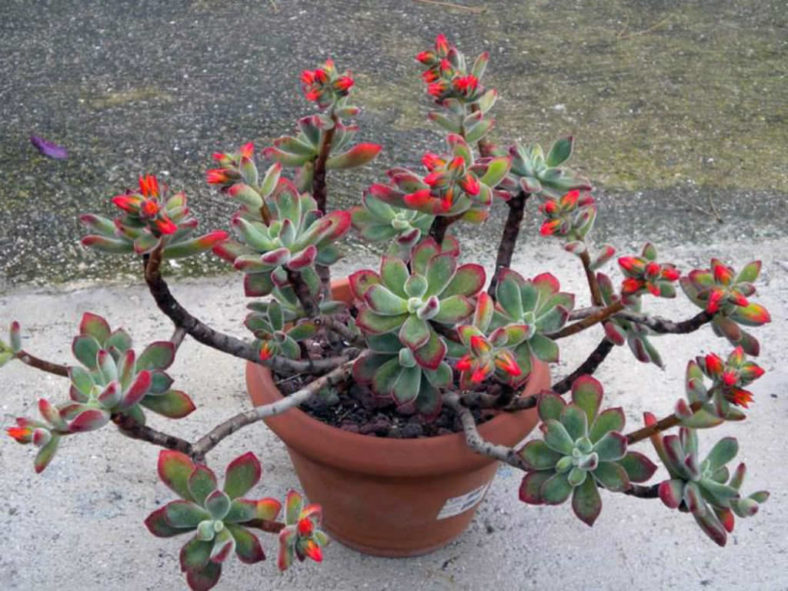In cultivation, the plants of Echeveria pulvinata usually represent this cultivar. Unlike the type species, this cultivar has narrower and more pointed leaves with intensely red margins and tips. Additionally, the sepals have the same striking red color as the leaves, while the petals of the flowers in this cultivar display a darker orange keel.
Scientific Name
Echeveria pulvinata 'Ruby'
Common Name(s)
Chenille Plant, Plush Plant
Synonym(s)
Echeveria pulvinata 'Ruby Blush', Echeveria pulvinata 'Ruby Slippers'
Scientific Classification
Family: Crassulaceae
Subfamily: Sempervivoideae
Tribe: Sedeae
Genus: Echeveria
Origin
Echeveria pulvinata 'Ruby' is an attractive cultivar of Echeveria pulvinata. It was described and named by B.K. Boom in 1957 from a plant in cultivation without a known origin.
Description
Echeveria pulvinata 'Ruby' is a beautiful, shrubby succulent with stems topped with small rosettes of green, spoon-shaped leaves with intensely red margins and tips, and covered with silvery-white hairs. It can grow up to 12 inches (15 cm) tall.
In late winter into spring (sometimes later), the leafy, arching inflorescences appear, holding racemes of yellow and orange, urn-shaped flowers. The inflorescences can reach a length of 1 foot (30 cm).
Forms and Hybrids of Echeveria pulvinata 'Ruby'

Hardiness
USDA hardiness zones 9b to 11b: from 25°F (-3.9°C) to 50°F (10°C).
How to Grow and Care
Most common Echeveria species are not complicated succulents to grow, provided you follow a few basic rules. First, be careful never to let water sit in the rosette, as it can cause rot or fungal diseases that will kill the plant. Additionally, remove dead leaves from the bottom of the plant as it grows. These dead leaves provide a haven for pests, and Echeverias are susceptible to mealybugs. Finally, as with all succulents, maintaining careful watering habits and providing ample light will help ensure success.
Repot as needed, preferably during the warm season. To repot a succulent, ensure the soil is dry before repotting, then gently remove the pot. Knock away the old soil from the roots, removing any rotted or dead roots. Treat any cuts with a fungicide.
Most Echeverias can be easily propagated from leaf cuttings, although some are better propagated from seeds or stem cuttings. To propagate a leaf cutting, place the individual leaf in potting soil for succulents and cover the dish until the new plant sprouts.
Learn more at How to Grow and Care for Echeveria.
Links
- Back to genus Echeveria
- Succupedia: Browse succulents by Scientific Name, Common Name, Genus, Family, USDA Hardiness Zone, Origin, or cacti by Genus
Photo Gallery
Click on a photo to see a larger version.


